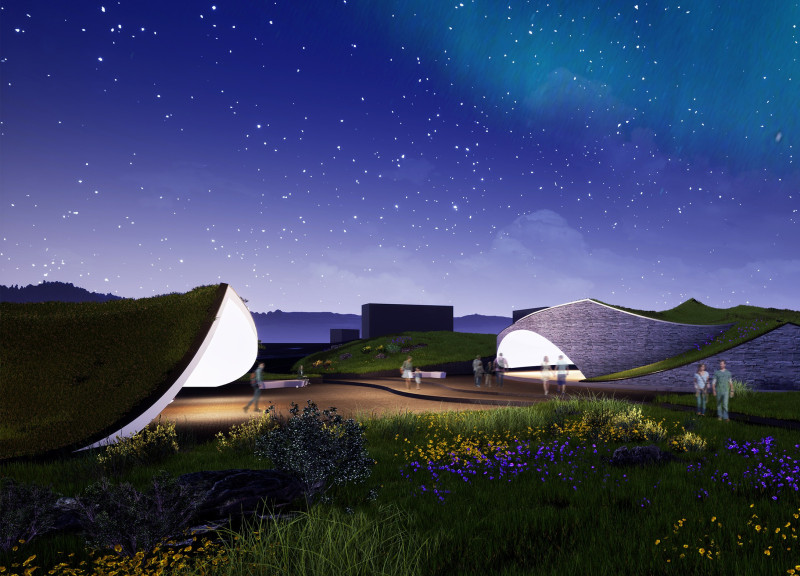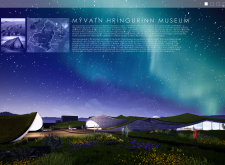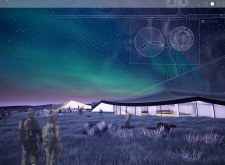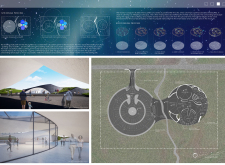5 key facts about this project
The Mývatn Circle Museum is located in the stunning landscape that surrounds Lake Mývatn in Iceland. It serves as a cultural hub designed to help visitors understand the natural and historical importance of the area. The museum’s design concept is inspired by the region’s unique geological features, particularly its pseudo craters. The building forms are circular, echoing the shapes found in the landscape. This approach allows the museum to blend with its environment while providing an inviting atmosphere for exploration.
Design Integration
The project comprises two circular buildings: one for parking and the other dedicated to the museum. This layout supports a smooth transition between the construction and the natural surroundings. A central pathway connects both structures, allowing visitors to easily navigate the site. The pathway follows existing trails, making it straightforward for guests to move between the museum and the outdoor space.
Spatial Dynamics
Elevated entry points enhance the feeling of arrival for visitors. This elevation not only provides better views of the landscape but also encourages exploration. The thoughtful placement of these entry points guides people from the surrounding environment into the curated spaces inside the museum, creating a welcoming atmosphere.
Ecological Features
A prominent aspect of the design is the green roof. It features native grasses and moss that require only a small amount of soil to thrive. This eco-friendly feature reinforces the connection between the museum and the landscape while promoting local biodiversity. Some roof areas are made thicker to accommodate larger native shrubs and small trees, further linking the museum to its natural setting.
The roof forms, along with the landscaped surroundings, create visual ties between the museum and the nearby pseudo craters. This encourages visitors to appreciate the natural beauty of Lake Mývatn. The building’s design highlights both the architectural elements and the ecological context, creating a space that balances function and environmental respect.






















































